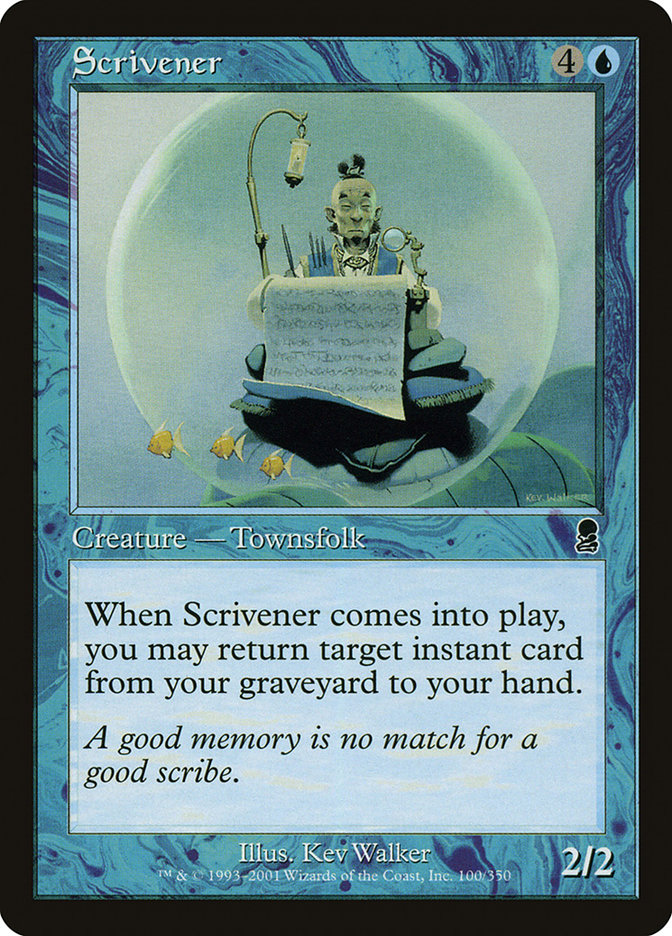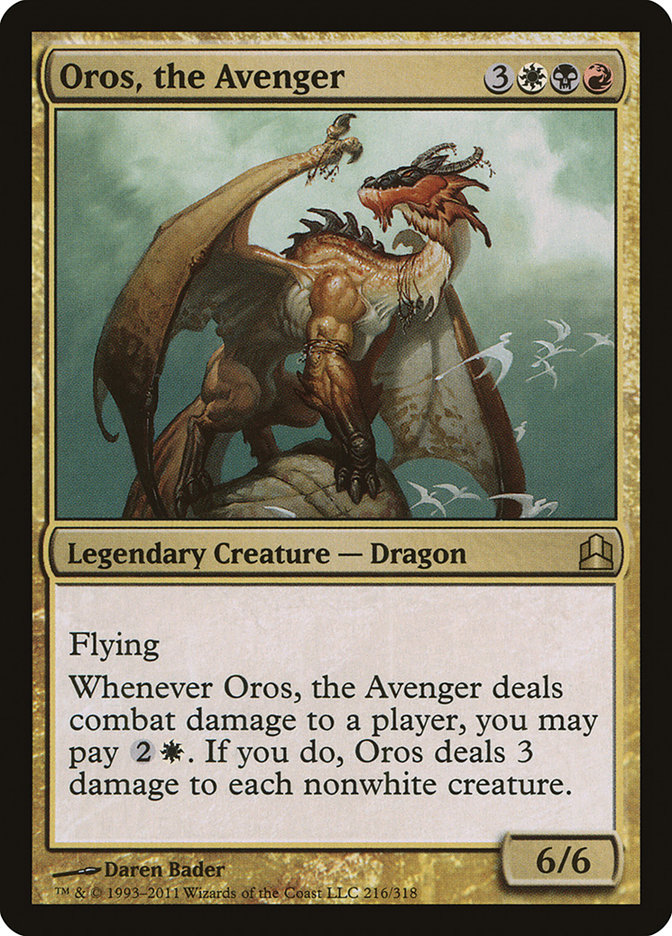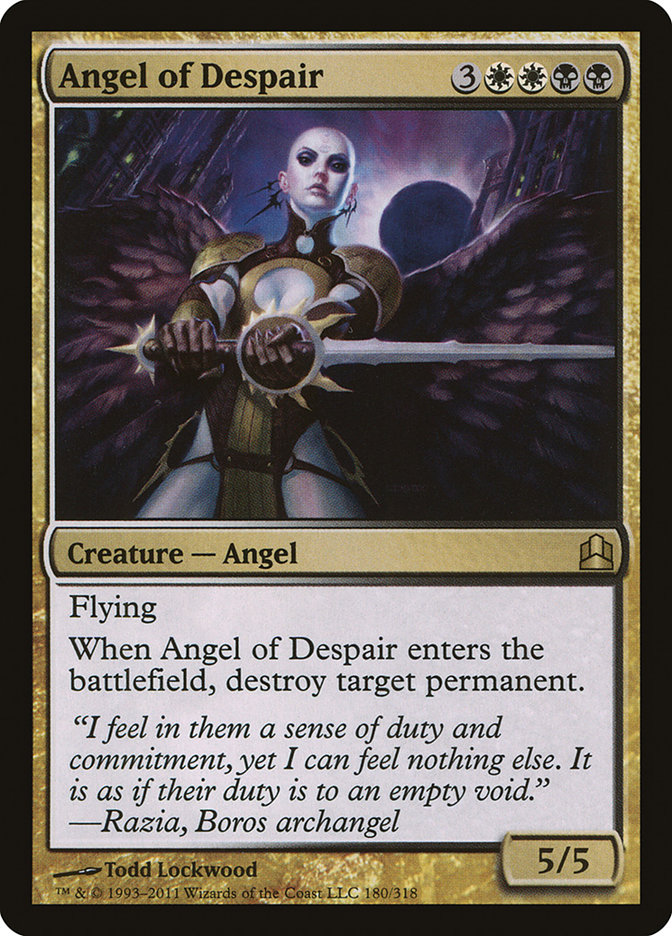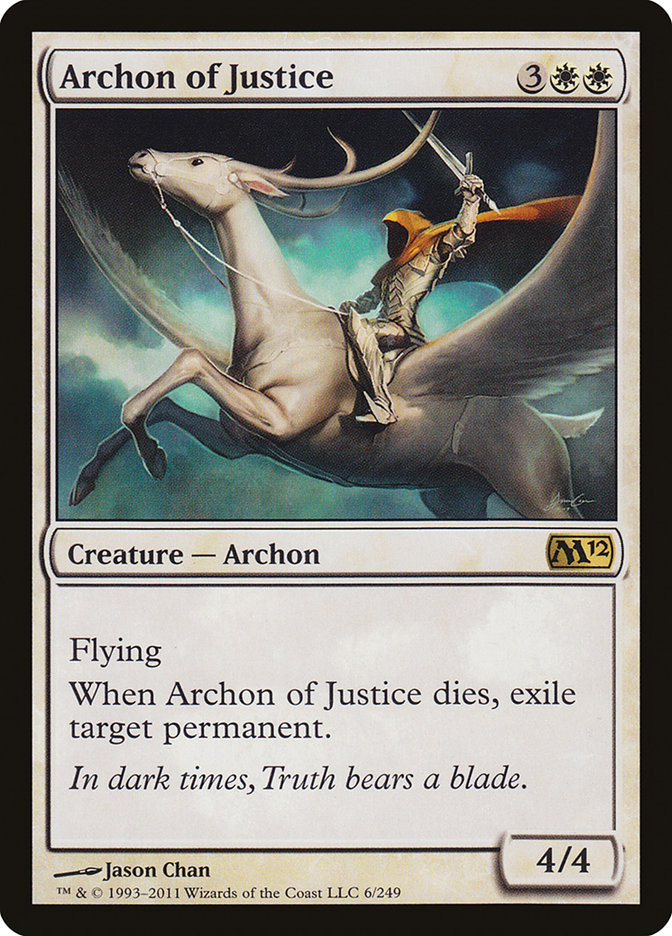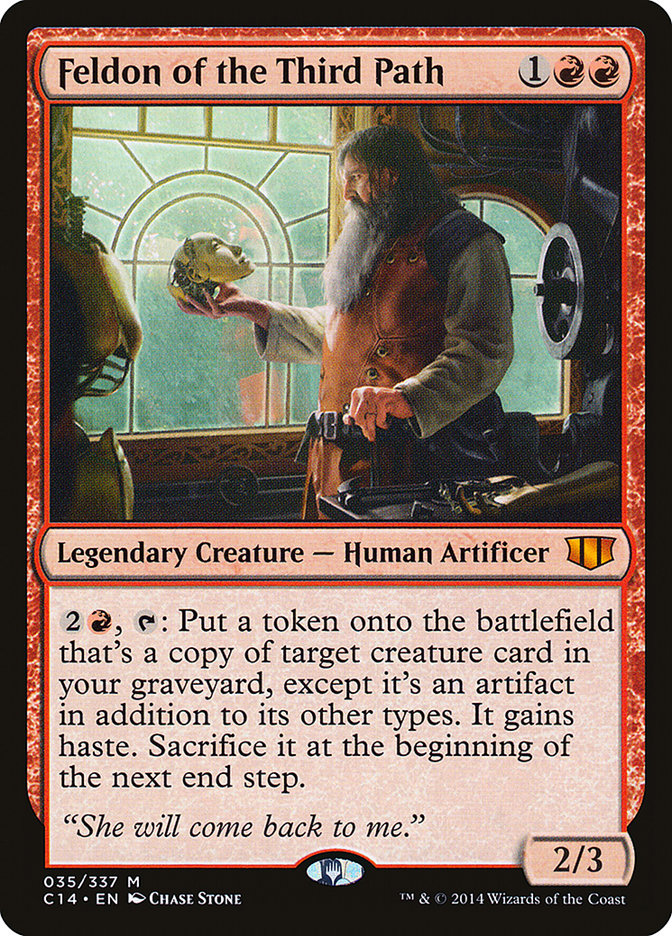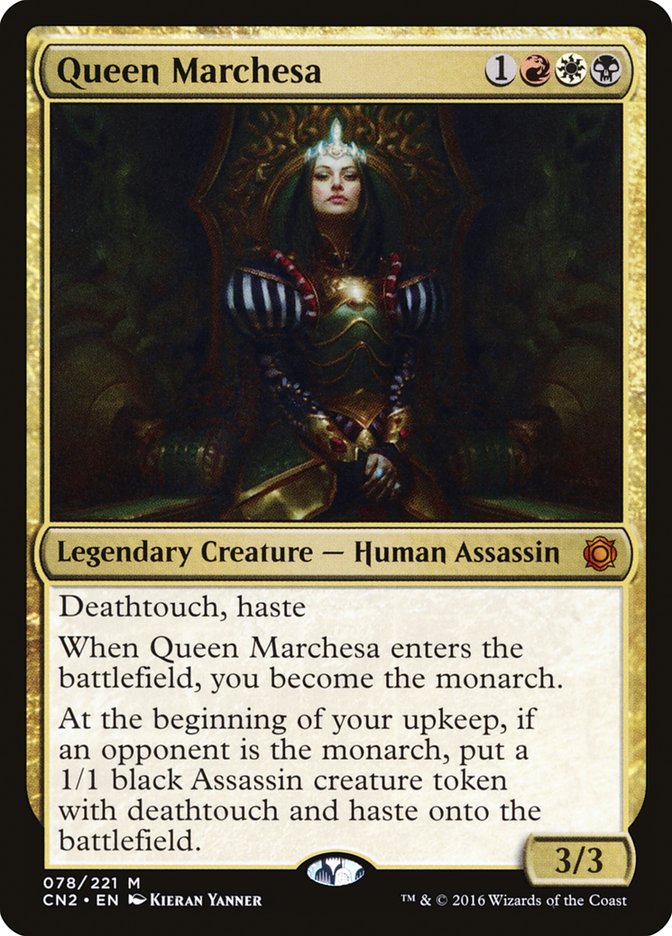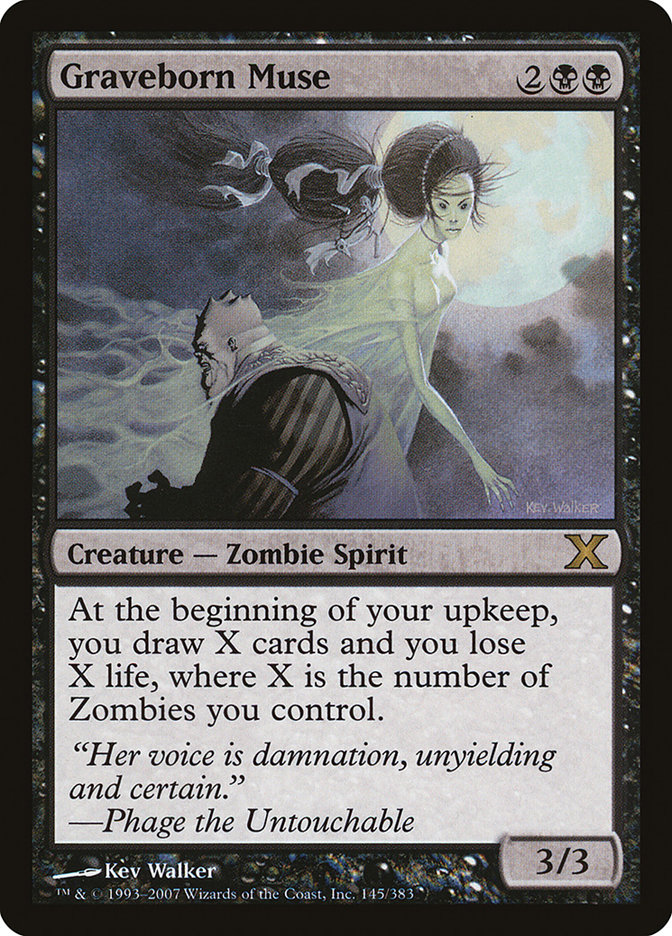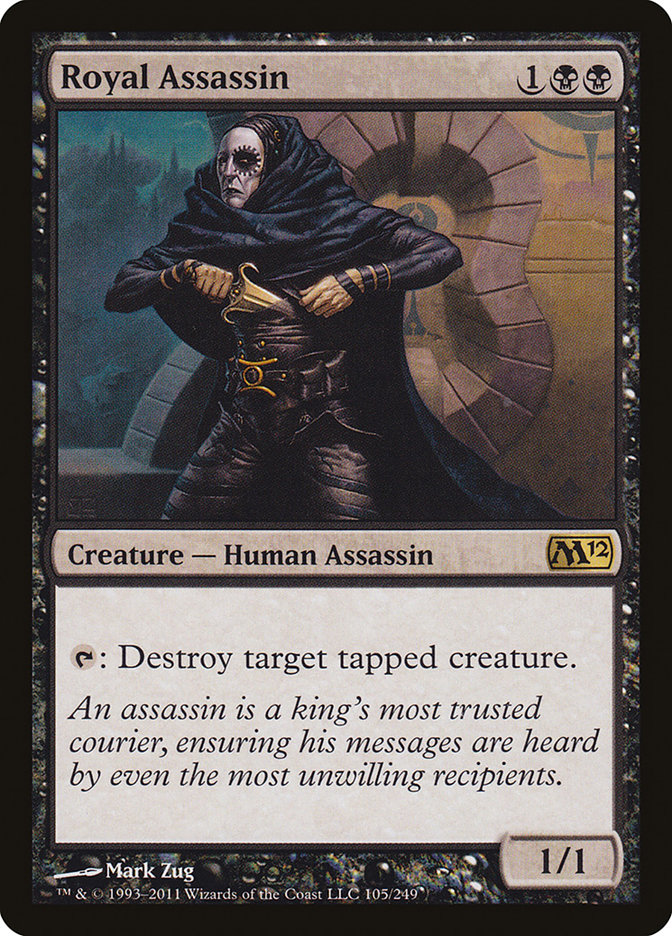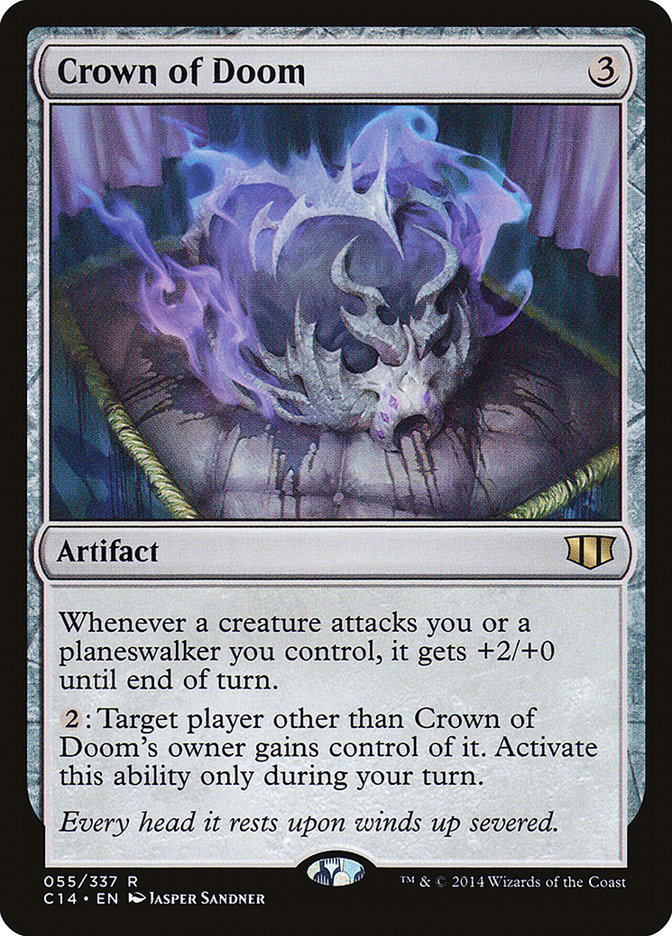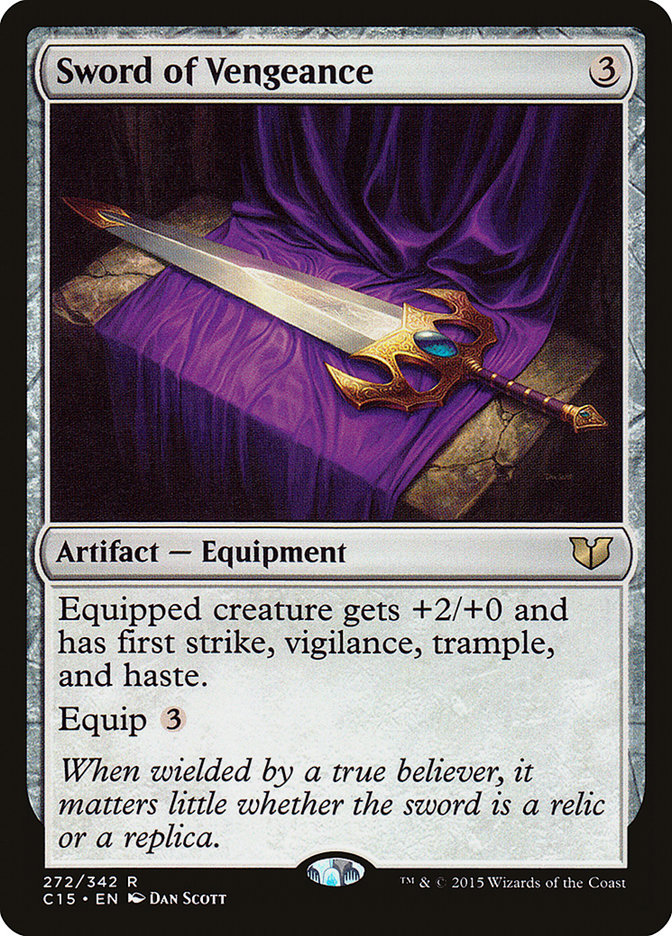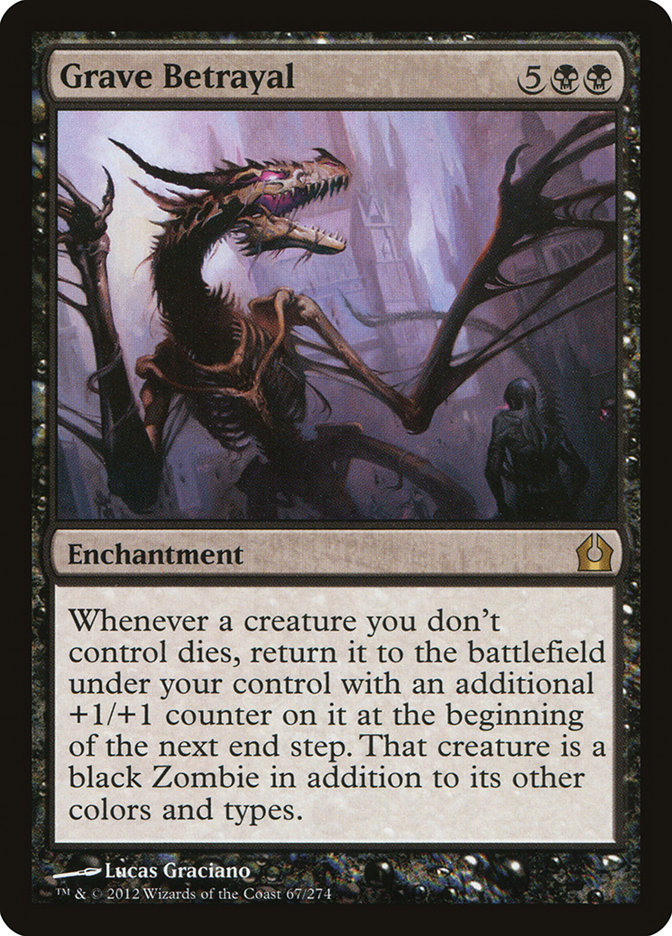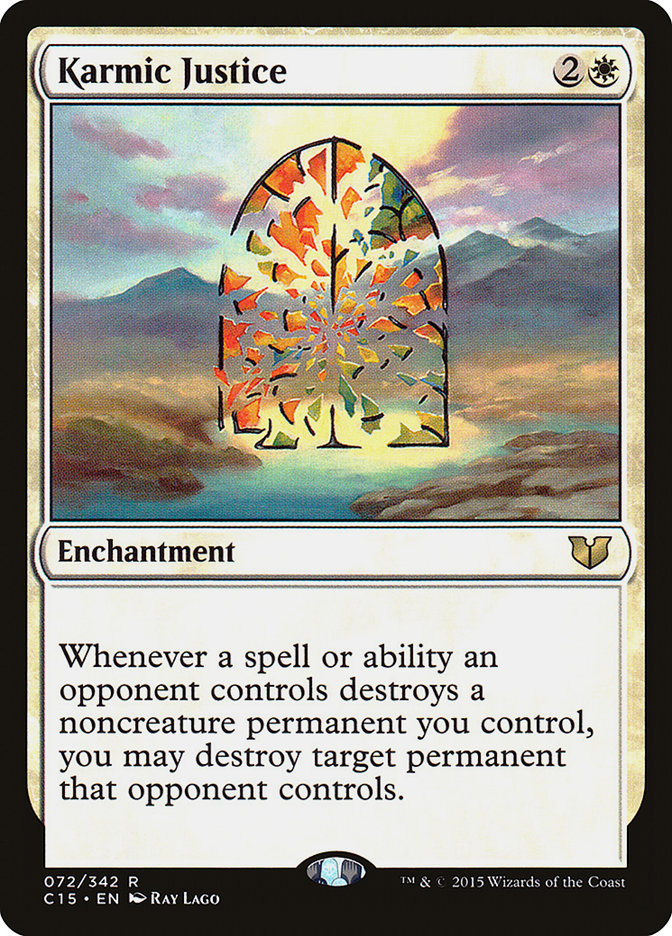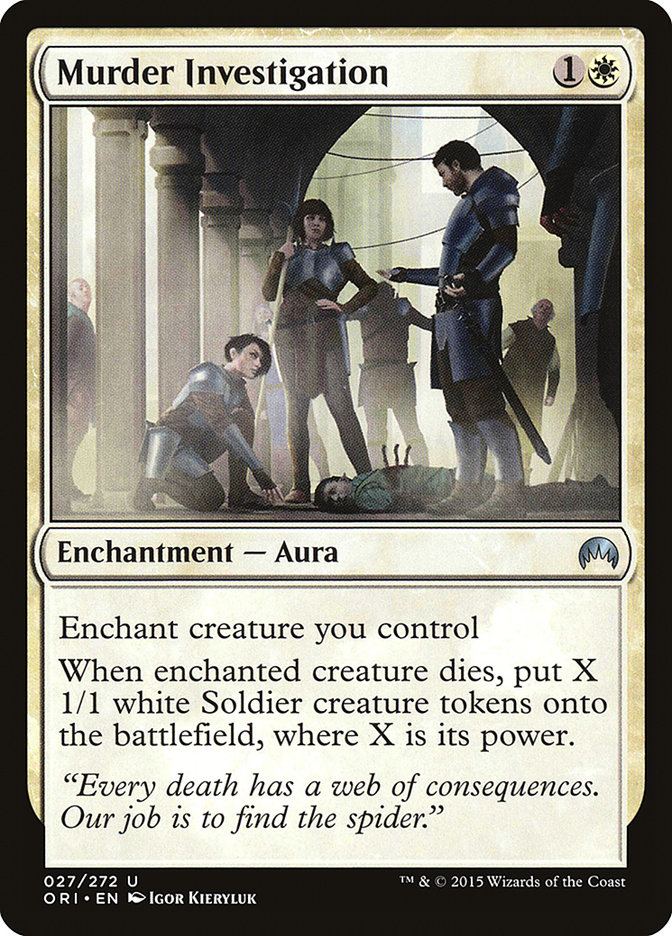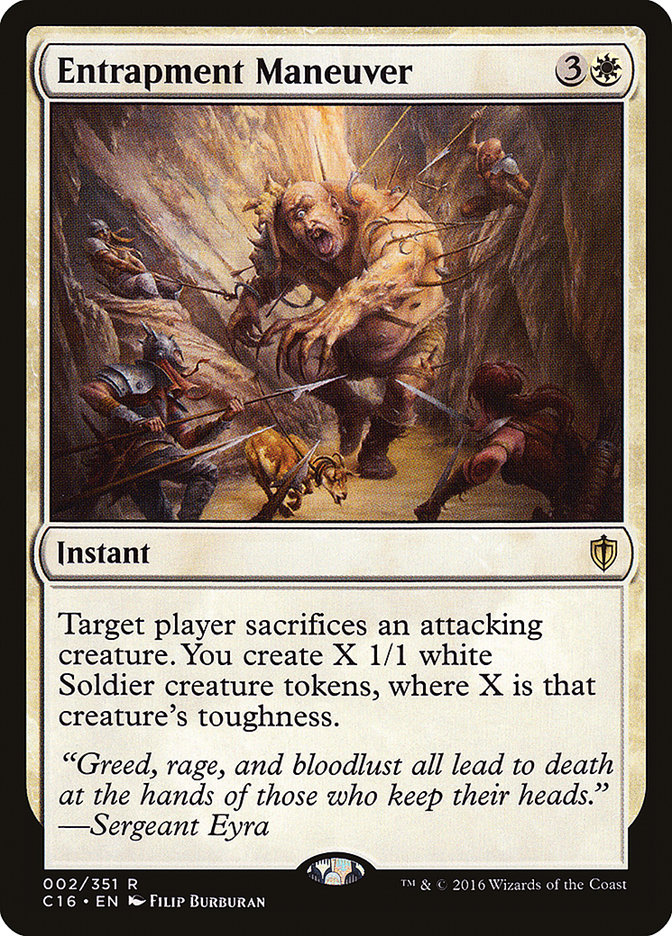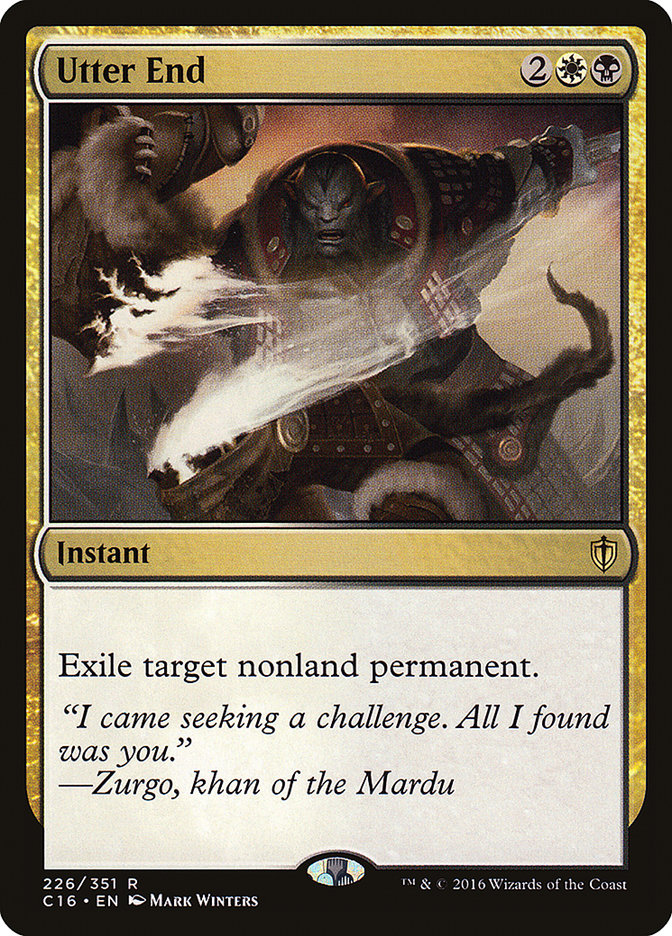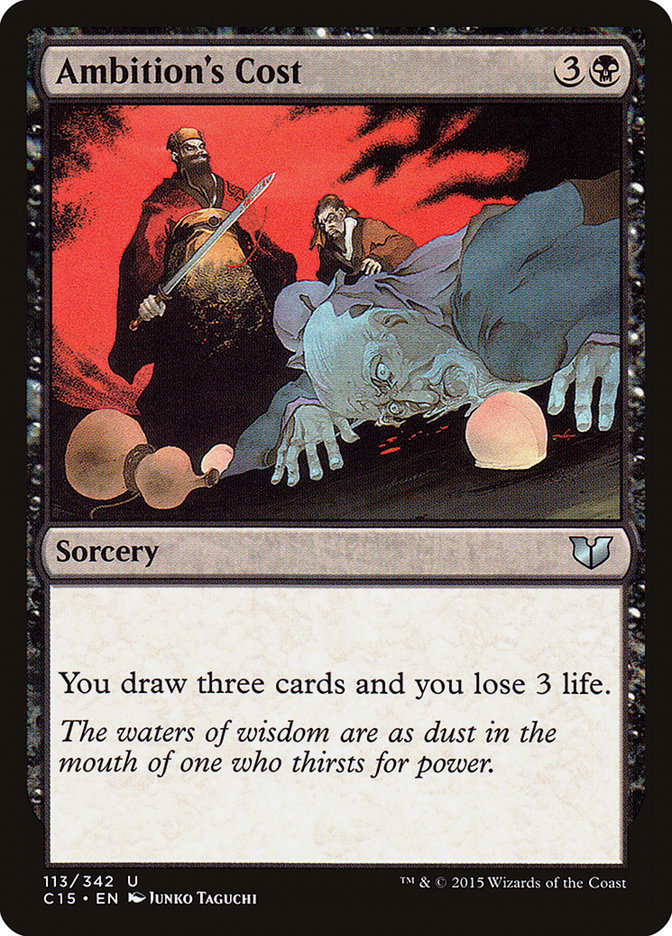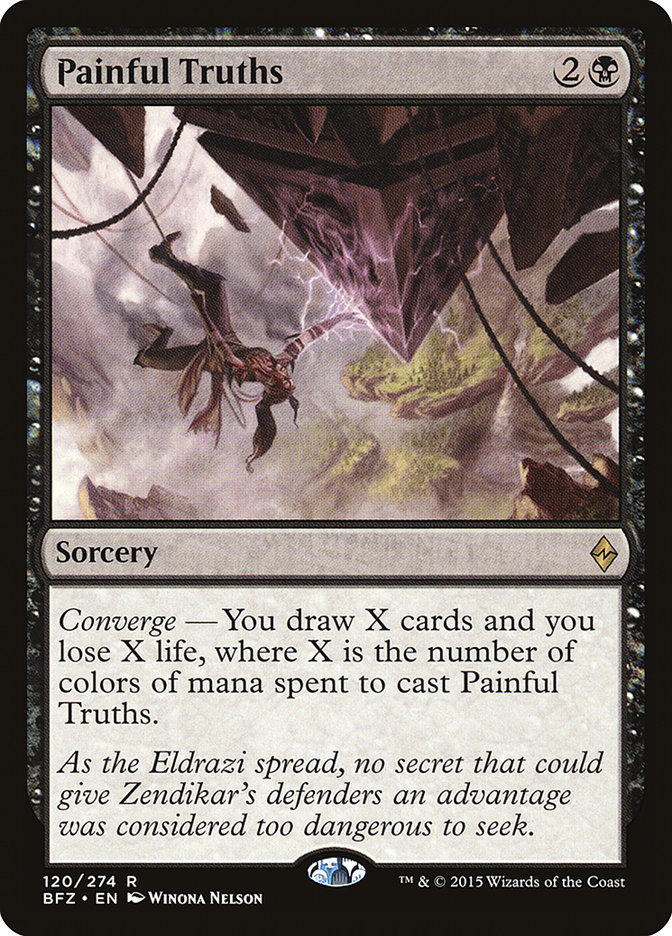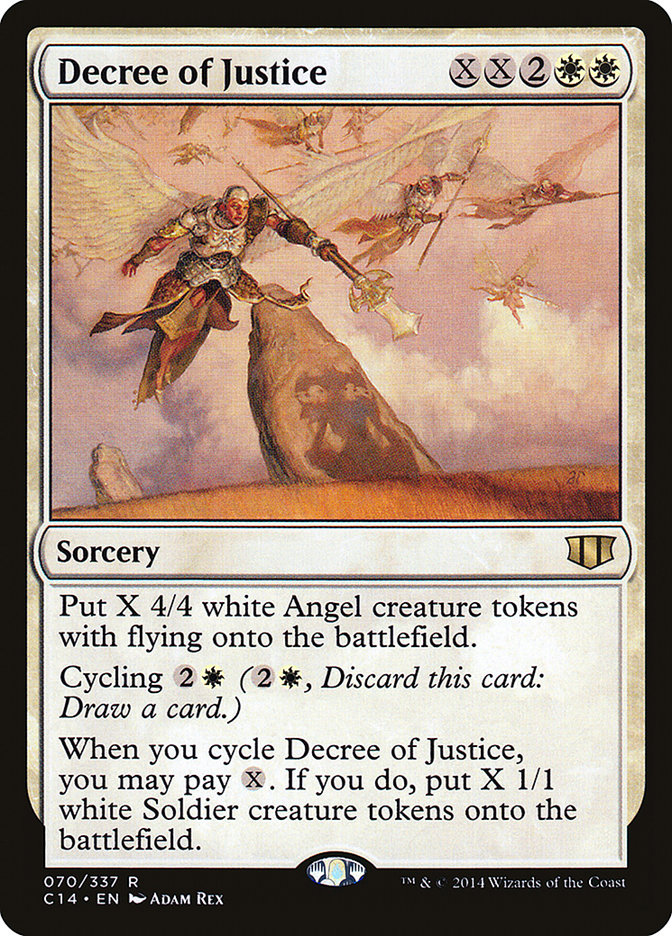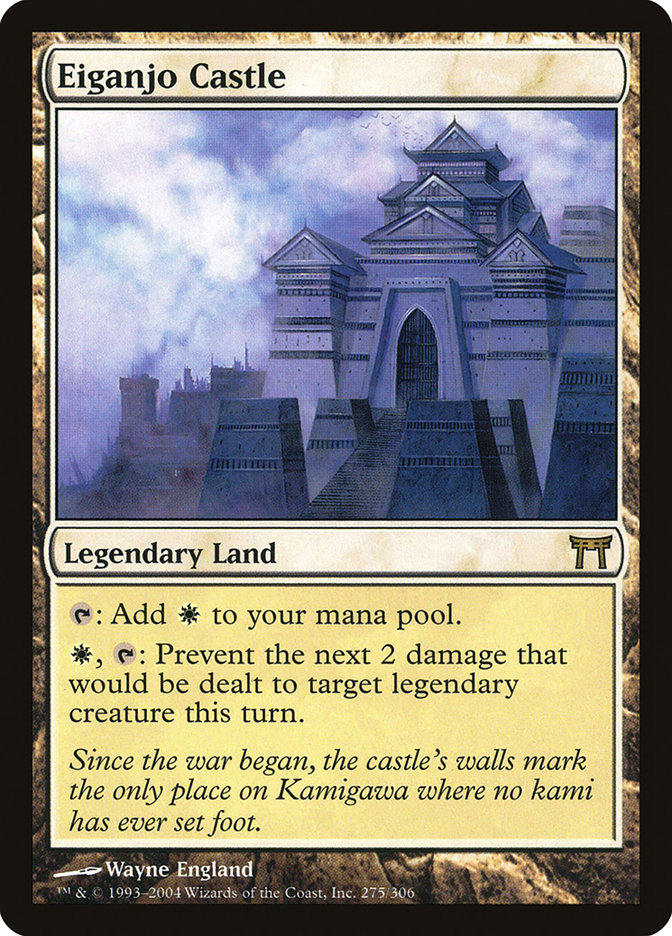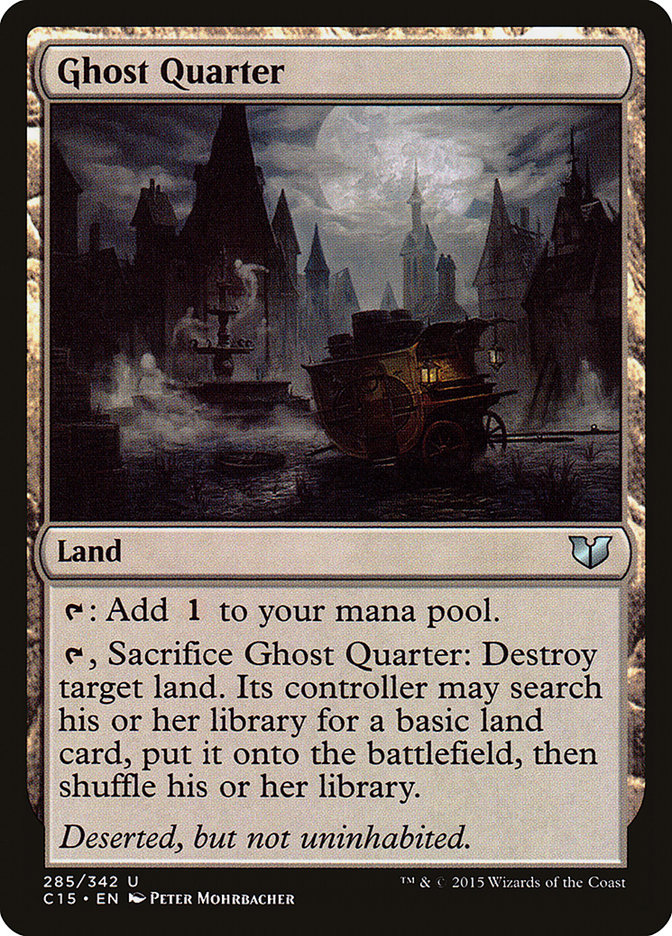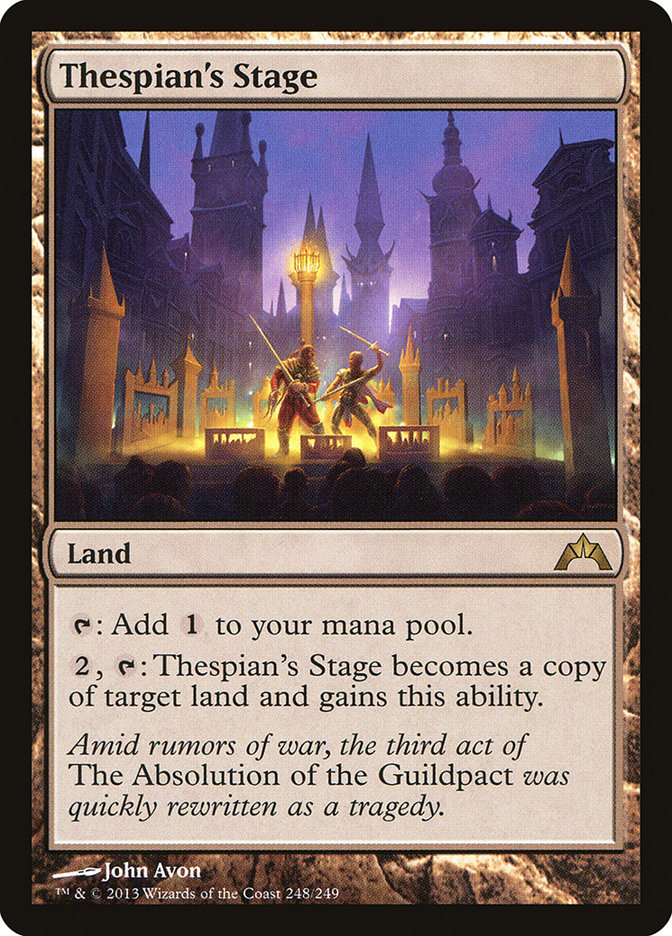Unless you figure out a way to add wine, you probably won’t cross over two things I’m more passionate about that Commander and Shakespeare. When Will Ekstrom pinged me via social media about his Hamlet build, I knew it was something I absolutely had to investigate.
Will is a 24-year-old from Eugene, Oregon who has just finished his Master’s Degree in Music Composition from Westminster Choir College in Princeton, New Jersey. When I asked him how he got into the format, he said:
I first played Commander in 2010 with a pile of blue rares. The only thing I remember about that game was that a) I somehow won and b) my friend’s Progenitus got killed so many times it became a joke. When I moved to college a few months later and found that Commander was the go-to format, I was more than happy to embrace the chaos. Six years and 27 decks later, I felt like it was time to try something new. I have always appreciated more flavorful plays (like having my Karn Liberated hit by a Legacy Weapon), so I thought making a flavor-based deck would be a fun challenge.
My next question was about how he settled on a Hamlet deck. He replied:
I decided to make a deck based on Hamlet because not only is it my favorite Shakespeare play, but I thought it would be well-known enough for other players to get the references. There are three types of cards in the deck. First, there are the cards that depict the people, scenes, events, and items of the play, like Queen Marchesa as Gertrude and Shinka, the Bloodsoaked Keep as Elsinore at the end of the play. There are also cards that illustrate specific famous lines, such as Sudden Death for “Oh, that this too, too solid flesh would melt / Thaw and resolve itself into a dew!” Last are the more conceptual cards such as Ambition’s Cost. The deck isn’t really strong at all, but it’s still fun to play for the flavor wins.
For those of you who aren’t familiar with The Tragedy of Hamlet, Prince of Denmark, it’s a play about the Prince, whose father has been murdered by (and his throne and wife claimed by) Hamlet’s uncle, Claudius. Hamlet’s father’s ghost asks him to take revenge, and a tragedy ensues. You can tell Shakespeare’s comedies from tragedies by looking at the end of the play. If there’s a marriage and bunch of men in women’s clothing, that’s a comedy. If there’s a pile of bodies, it’s a tragedy. There are also historical plays, like Henry V.
Anyway, written sometime around 1599 (there’s quite a bit of scholarly debate on the subject), Hamlet is a deeply emotional and problematic play with loads of famous lines and soliloquies, as well as deep exploration of the human condition. It’s an example of a skilled playwright at the top of his craft. It’s a departure from classic Aristotelian plot-focused drama (popular in Shakespeare’s time) to one of character focus, representing a turn in Shakespeare’s career. If you’d like to check out a film adaptation of Hamlet, there’s a brilliant 1996 version directed by and starring Kenneth Branagh, featuring an all-star cast (to include the transcendent Kate Winslet as well as Robin Williams and Billy Crystal in small roles). If you prefer more a more traditional stage-to-film version, there’s Sir Laurence Olivier’s 1948 version, which I can highly recommend.
I’ll first give you Will’s decklist and then offer you both his reasons for including the cards in the deck and a bit of my own commentary along the way.
Creatures (17)
- 1 Royal Assassin
- 1 Gravedigger
- 1 Anger
- 1 Graveborn Muse
- 1 Gerrard Capashen
- 1 Angel of Despair
- 1 Droning Bureaucrats
- 1 Darien, King of Kjeldor
- 1 Steamflogger Boss
- 1 Archon of Justice
- 1 Mikaeus, the Lunarch
- 1 Abhorrent Overlord
- 1 Feldon of the Third Path
- 1 Hanweir Garrison
- 1 Queen Marchesa
- 1 Gonti, Lord of Luxury
- 1 Skyship Stalker
Lands (38)
- 6 Plains
- 1 Kor Haven
- 6 Swamp
- 5 Mountain
- 1 Scrubland
- 1 Plateau
- 1 Badlands
- 1 Shinka, the Bloodsoaked Keep
- 1 Eiganjo Castle
- 1 Bloodstained Mire
- 1 Boros Garrison
- 1 Sunhome, Fortress of the Legion
- 1 Godless Shrine
- 1 Orzhov Basilica
- 1 Ghost Quarter
- 1 Rakdos Carnarium
- 1 Graven Cairns
- 1 Bojuka Bog
- 1 Tectonic Edge
- 1 Command Tower
- 1 Vault of the Archangel
- 1 Thespian's Stage
- 1 Westvale Abbey
- 1 Hanweir Battlements
Spells (44)
- 1 Ambition's Cost
- 1 Aura of Silence
- 1 Grave Pact
- 1 Oversold Cemetery
- 1 Akroma's Vengeance
- 1 Decree of Justice
- 1 Harsh Mercy
- 1 Marble Diamond
- 1 Fire Diamond
- 1 Charcoal Diamond
- 1 Oath of Lieges
- 1 Oath of Ghouls
- 1 Ill-Gotten Gains
- 1 Karmic Justice
- 1 Boros Signet
- 1 Orzhov Signet
- 1 Rakdos Signet
- 1 Sudden Death
- 1 Kor Dirge
- 1 Slaughter Pact
- 1 Beseech the Queen
- 1 Mark of Asylum
- 1 Path to Exile
- 1 Day of Judgment
- 1 Sword of Vengeance
- 1 Devil's Play
- 1 Blasphemous Act
- 1 Sever the Bloodline
- 1 Stony Silence
- 1 Murder
- 1 Chromatic Lantern
- 1 Rest in Peace
- 1 Grave Betrayal
- 1 Murder Investigation
- 1 Hide
- 1 Tormented Thoughts
- 1 Utter End
- 1 Crown of Doom
- 1 Comeuppance
- 1 Sword of the Animist
- 1 Painful Truths
- 1 Morbid Curiosity
- 1 Curse of Vengeance
- 1 Entrapment Maneuver

Creatures
Oros, the Avenger: Hamlet. His desire for revenge is black, but it’s for white reasons (as Claudius both broke the laws of royal inheritance as well as married Gertrude). Add in some red for Hamlet’s anger and feigned madness and we ended up with a Mardu deck. I picked Oros because a) he wants revenge and b) everyone dies except for Horatio and Fortinbras, who are both white.
This is a fine choice because Oros/Hamlet repeatedly deals damage to not only his enemies, but some of his own people.
Abhorrent Overlord: One of a few Claudius cards in this deck. Mostly picked for the title.
Claudius is a horrible person. “Abhorrent” is an apt word.
Angel of Despair: Ophelia. Again, mostly picked for the title. I had a really hard time finding an Ophelia card.
Ophelia is indeed a despairing Angel who goes mad due to Hamlet’s own madness.
Anger: Hamlet is just angry a lot in this play.
There’s a good deal of scholarly debate over whether Hamlet’s motivations are for revenge or justice, and whether his madness is feigned or real—but it’s pretty clear that he’s definitely angry.
Archon of Justice: The Ghost. Yeah, he’s not a Spirit, but the art and the name were just too good.
I make an argument for Seizan, Perverter of Truth, which is a Spirit, for King Hamlet. We tend to take what the character says at face value (after all, he’s the victim of the crime), but there are quite a few problems with what he asks Hamlet to do. Most importantly, any revenge which Hamlet exacts isn’t going to get his father out of Purgatory any faster. Hamlet also wonders if his father’s ghost is a devil sent to trick him into committing murder and damning himself.
Darien, King of Kjeldor: Fortinbras, both for the Nordic-sounding name and because he brings soldiers with him.
Droning Bureaucrats: Rosencrantz and Guildenstern.
Check out also Rosencrantz & Guildenstern are Dead, some of the best-ever on-screen chemistry between two actors—in this case, Gary Oldman and Tim Roth.
Feldon of the Third Path: He’s not anyone in particular, but he’s doing the “Alas, poor Yorick” pose.
There’s lots of good stuff to pick out of the gravedigger scene. What’s cool about the choice of Feldon is its flavor text: “She will come back to me,” which can certainly represent Hamlet’s thoughts about Ophelia.
Gerrard Capashen: Laertes, mostly because he looks like a fencer. Yeah, he probably should have been R/W then, but none of the R/W legendary Soldiers felt right to me.
Laertes gets tricked by Claudius into killing Hamlet with poison, but there aren’t any W/B legendary creatures which fit the bill.
Gonti, Lord of Luxury: Another Claudius card, because of both deathtouch and taking what other people have (in this case, his brother’s crown and wife).
Superb choice, and, of course, a fun card to play with.
Graveborn Muse: Another Ghost card.
Gravedigger: One of the Clowns in Act 5, Scene 1.
He’s also doing the “alas” pose.
Hanweir Garrison: Soldiers for the guard. And Hanweir itself is the “Oh, that this too, too solid flesh would melt / Thaw and resolve itself into a dew!” line.
Steamflogger Boss: Polonius. Because he is useless.
Polonius, who is a real gasbag, is famous for the ironic quote, “Brevity is the soul of wit.”
Mikaeus, the Lunarch: Horatio. You don’t get to use his ability to kill himself. Hamlet won’t allow it.
It might be a little bit of a stretch, but how about Angelic Field Marshal as Horatio? When Hamlet and Horatio work together, things are better—but when you don’t “control” Hamlet (who is frequently out of control), things are worse.
Queen Marchesa: Gertrude.
When you marry Queen Marchesa, you become the monarch. Brilliant.
Royal Assassin: Another Claudius card. I couldn’t pass up the double entendre.
Skyship Stalker: Represents the Pirates that stalk Hamlet’s ship.
There might be some room to run with a Pirate sub-theme here, but that’s such a minor part of the play that I’d rather go in another direction. Perhaps another Angel card like Entreat the Angels to go with the Horatio’s final scene lines, “Good night sweet prince / and flights of angels sing thee to thy rest!”
Artifacts
Mana rocks: It’s a Commander deck, and one without green. I picked the Signets because Hamlet uses his father’s signet ring to make the false letter. Also, because the play is about royalty, I figured they should have some diamonds around.
Chromatic Lantern: Proper graveyard equipment.
I love it when properly-thematic cards are also functional in the deck.
Crown of Doom: Because apparently being in line to become king of Denmark is a bad idea.
Well, it’s a tragedy.
Sword of the Animist and Sword of Vengeance: The blades Hamlet and Laertes duel with.
Grafted Exoskeleton is the only Equipment which gives poison counters, so that doesn’t fit. Quietus Spike does, however, and its name comes from the line in Act 3, Scene 1 (which opens “To be or not to be,” perhaps the play’s most famous line): “When he himself might his quietus make / With a bare bodkin.”
Enchantments
Aura of Silence and Stony Silence: “The rest is silence.” Hamlet’s final words.
Another Silence card that might fit is Moment of Silence. Skipping the next combat step reflects Hamlet deciding to not kill Claudius when he has the opportunity. Despite some common opinion that this makes Hamlet indecisive, it’s actually a moment of clear decision. Claudius has just finished praying, so if Hamlet kills him now, he’ll go to Heaven (having just confessed). Hamlet would rather wait until he can kill Claudius with sins upon his soul—just like King Hamlet had when Claudius murdered him.
Curse of Vengeance, Grave Pact, Oath of Ghouls, and Oath of Lieges: Hamlet’s oath to avenge his father.
Grave Betrayal: Just a good card name for Claudius killing his brother.
Karmic Justice: Another good card name for the play.
Mark of Asylum: “Or that the Everlasting had not fix’d / His canon ‘gainst self-slaughter!”
Murder Investigation: Represents Hamlet investigating whether or not Claudius is guilty.
Oversold Cemetery: The scene for Act 5, Scene 1.
Rest in Peace: Self-explanatory?
Except no one really rests in peace here.
Instants
Comeuppance: One of the many revenge cards in the deck.
One of the questions the play asks is if seeking revenge makes us the good person or the bad one. Good choice here.
Entrapment Maneuver: Represents Hamlet’s schemes, such as staging the play and swapping letters.
In the Branagh version, Charlton Heston plays the leader of the troupe of actors. I never considered Heston that great of an actor, thinking of him as more of a movie star. He acquits himself quite nicely in the role.
Hide//Seek: Represents both Claudius’ secret and Hamlet trying to uncover the truth.
Kor Dirge: Represents Ophelia singing.
I once lost a bet to fellow Level 5 Judge Gis Hoogendijk while discussing the film, in which Kate Winslet does indeed sing. He said that she had a Top 10 hit, which I dismissed out of hand. Turns out that she did, with a song called “What If.” I surrendered a foil Lightning Bolt to him after signing it something like “Gis knows his music.”
Murder and Utter End: Represents Hamlet killing Polonius, Laertes, and Claudius. The art for Murder even has a curtain (under the guy, but still).
Polonius is hiding behind a curtain in Gertrude’s room when Hamlet murders him, thinking that it’s actually Claudius. Awkward.
Path to Exile: “Get thee to a nunnery!”
As part of his (feigned) insanity, Hamlet banishes Ophelia, which is part of her own descent—but not before verbally abusing her well more than anyone deserves.
Slaughter Pact: Another oath card.
Sudden Death: “Oh, that this too, too solid flesh would melt / Thaw and resolve itself into a dew!”
I love Sudden Death as a card, but it feels like a bit of a stretch here, since most of the deaths are a long time coming. Polonius is a bit of a surprise, but otherwise, because of the structure of the play, we can pretty much tell as it unfolds who won’t be around at the end.
Sorceries
Akroma’s Vengeance: Another revenge card.
Significant in that Hamlet’s vengeance wrecks not just the things of his opponents, but his own kingdom as well.
Ambition’s Cost: For Claudius.
Beseech the Queen: When Hamlet asks Gertrude to not share Claudius’s bed.
Painful Truths: All of the truths in the play are painful.
True, but one of the anxieties of the play is in not knowing the actual truth of a number of things.
Blasphemous Act: Another card illustrating Claudius killing King Hamlet.
Especially because he does it with King Hamlet unabsolved.
Day of Judgment: The end of the play.
Damnation might also work, more so because of its finality (creatures can’t regenerate).
Decree of Justice: For when Hamlet declares Fortinbras the new king of Denmark.
Might also fit for the “flights of angels” quote.
Devil’s Play: Because I couldn’t play Shahrazad.
I’m not sure what Will is getting at here, although Shahrazad’s sub-games might reflect the play-within-the-play as Hamlet tries to “catch the conscience of the king.”
Harsh Mercy: The name evokes Act 3, Scene 3 when Hamlet decides to not kill Claudius because he deserves worse.
Indeed. It does a great job of illustrating what’s happening in that scene. Or course, Hamlet’s “mercy” lets a bunch of other bad stuff happen, which is pretty harsh.
Ill-Gotten Gains: Claudius’s crown and marriage to Gertrude.
Morbid Curiosity: Represents Hamlet’s… “false” insanity. Also represents my favorite moment in the play, when he’s talking to Yorick’s skull and realizes that he’s gone too far in his jests: “Quite chap-fallen?”
Sever the Bloodline: Because the Danish bloodline gets severed.
There’s always an element of “what might have been” in a tragedy. The union of Hamlet and Ophelia would have set a powerful stage for Denmark’s future. To some extent, Hamlet is responsible for the bloodline’s downfall because of his campaign of retribution—suggesting maybe Campaign of Vengeance is a card for this deck.
Tormented Thoughts: Claudius, Hamlet, Ophelia… they got ’em.
To be fair, Claudius’s are only tormented after he’s done some really horrendous stuff. He didn’t have much conscience beforehand.
Lands
Bojuka Bog: I picked this as the stage for Act 1, Scene 5 based off the Branagh film version, which is also the reason for Tectonic Edge.
Eiganjo Castle and Shinka, the Blood-Soaked Keep: Elsinore, at the beginning and end of the play.
Cool idea, since it’s kind of pure in the beginning and quite defiled by the end.
Boros Garrison, Command Tower, Hanweir Battlements, and Sunhome, Fortress of the Legion: Parts of Elsinore.
Ghost Quarter: Also where the Ghost is found.
Graven Cairns: The stage for Act 5, Scene 1, along with Oversold Cemetery.
A great part of the discussion in the cemetery scenes revolves around whether or not Ophelia deserves a proper Christian burial because she committed suicide, and whether or not she’s actually responsible since she was insane.
Kor Haven and Vault of the Archangel: Gertrude’s bedroom.
I’m not sure I’d consider Gertrude much of an Angel. Her husband wasn’t even cold in the ground before she married his brother, suggesting some sort of complicity in King Hamlet’s murder. There’s no real textual evidence in the play for her conspiring with Claudius, but examining how she and Claudius behave together, the thread of her innocence unravels pretty quickly.
Thespian’s Stage: For the play in Act 3.
A theme which Shakespeare frequently explores is the stagecraft inherent in rulership. It’s only slightly evident here; he delves into it rather deeply in plays like Henry V and Richard III.
Westvale Abbey: The nunnery for Ophelia to get to. No wonder she went nuts!
More to Consider
I’ll note a few other on-theme cards worthy of consideration:
Hint of Insanity: Is Hamlet insane or just pretending?
Purgatory: Representing where King Hamlet is (or is he?).
Vial of Poison: Claudius pours a vial of poison in King Hamlet’s ear. Additionally, the swords are poisoned.
As Will said, the deck isn’t going to dominate too many tables, but looks like fun, especially if you start quoting lines from the play as you cast spells. Commander is the only format in which a deck like this is even remotely possible, something for which I’m particularly happy.
This week’s Deck Without Comment is Glissa, Glissa.
Creatures (27)
- 1 Solemn Simulacrum
- 1 Triskelion
- 1 Bottle Gnomes
- 1 Arcbound Ravager
- 1 Duplicant
- 1 Arcbound Reclaimer
- 1 Arcbound Fiend
- 1 Arcbound Crusher
- 1 Arcbound Bruiser
- 1 Pentavus
- 1 Grave-Shell Scarab
- 1 Endrek Sahr, Master Breeder
- 1 Scarecrone
- 1 Butcher of Malakir
- 1 Pilgrim's Eye
- 1 Steel Overseer
- 1 Wurmcoil Engine
- 1 Steel Hellkite
- 1 Sylvok Replica
- 1 Perilous Myr
- 1 Scavenging Ooze
- 1 Burnished Hart
- 1 Catacomb Sifter
- 1 Filigree Familiar
- 1 Foundry Inspector
- 1 Scrap Trawler
- 1 Treasure Keeper
Lands (37)
Spells (35)
- 1 Nevinyrral's Disk
- 1 Sol Ring
- 1 Kodama's Reach
- 1 Ashnod's Altar
- 1 Sword of Light and Shadow
- 1 Oblivion Stone
- 1 Wayfarer's Bauble
- 1 Ark of Blight
- 1 Aeolipile
- 1 Pit Trap
- 1 Helm of Possession
- 1 Voltaic Key
- 1 Attrition
- 1 Tormod's Crypt
- 1 Plague Boiler
- 1 Executioner's Capsule
- 1 Armillary Sphere
- 1 All Is Dust
- 1 Elixir of Immortality
- 1 Cultivate
- 1 Horizon Spellbomb
- 1 Nihil Spellbomb
- 1 Spine of Ish Sah
- 1 Ichor Wellspring
- 1 Trading Post
- 1 Dictate of Erebos
- 1 Profane Memento
- 1 Ugin's Nexus
- 1 Unstable Obelisk
- 1 Scroll of the Masters
- 1 Alchemist's Vial
- 1 Shadows of the Past
- 1 Aetherworks Marvel
- 1 Implement of Malice
- 1 Servo Schematic

Check out our comprehensive Deck List Database for lists of all my decks:
SIGNATURE DECKS
Purple Hippos and Maro Sorcerers; Kresh Into the Red Zone; Halloween with Karador; Dreaming of Intet; You Did This to Yourself;
THE CHROMATIC PROJECT
Mono-Color
Heliod, God of Enchantments; Thassa, God of Merfolk; Erebos and the Halls Of The Dead; Forge of Purphoros; Nylea of the Woodland Realm; Karn Evil No. 9
Guilds
Lavinia Blinks; Obzedat, Ghost Killer; Aurelia Goes to War; Trostani and Her Angels; Lazav, Shapeshifting Mastermind; Zegana and a Dice Bag; Rakdos Reimagined; Glissa, Glissa; Ruric Thar and His Beastly Fight Club; You Take the Crown, I’ll Take Leovold; Gisa and Geralf Together Forever;
Shards and Wedges
Adun’s Toolbox; Animar’s Swarm; Karrthus, Who Rains Fire From The Sky; Demons of Kaalia; Merieke’s Esper Dragons; Nath of the Value Leaf; Rith’s Tokens; The Mill-Meoplasm; The Altar of Thraximundar; The Threat of Yasova; Zombies of Tresserhorn
Four Color
Yidris: Money for Nothing, Cards for Free; Saskia Unyielding;
Five-Color
THE DO-OVER PROJECT
Animar Do-Over; Karador Do-Over; Karador Version 3; Karrthus Do-Over; Steam-Powered Merieke Do-Over; Mimeoplasm Do-Over; Phelddagrif Do-Over; Rith Do-Over; Ruhan Do-Over
If you’d like to follow the adventures of my Monday Night RPG group (in a campaign that’s been alive since 1987) which is just beginning the saga The Lost Cities of Nevinor, ask for an invitation to the Facebook group “Sheldon Menery’s Monday Night Gamers.”


